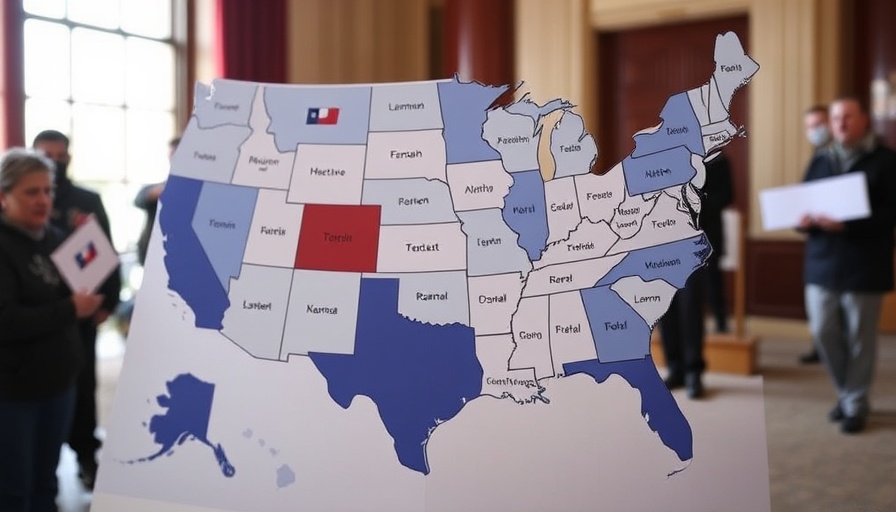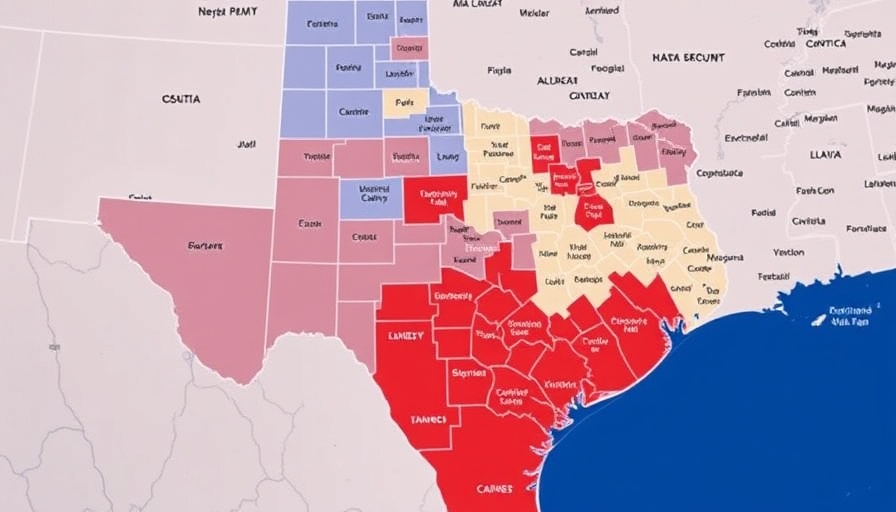
The Political Battlefield: Texas Redistricting and the Stakes Involved
The fight over congressional maps in Texas has intensified, with Democrats trying to stall a Trump-backed redistricting plan that could reshape political landscapes for the upcoming midterms. On the surface, it seems like a battle of power, but at its core, it's about the representation of voices and interests in a state where demographics are shifting rapidly. The Texas House of Representatives failed to convene after a mass Democratic walkout, denying Republican lawmakers the quorum needed to vote on the contentious map.
Understanding the Context: Texas’ Changing Demographics
Texas is one of the fastest-changing states in the U.S., with a rapidly diversifying population. According to the U.S. Census Bureau, the state's demographic shifts have included substantial growth among Hispanic and Black populations, who typically lean Democratic. Therefore, how congressional districts are drawn holds significant implications for political representation. The recent push for redistricting backed by former President Donald Trump seems aimed at solidifying Republican power against this backdrop of changing electoral dynamics. The current standoff is emblematic of the broader debate over how Congressional power is wielded through the manipulation of district lines.
Governor Abbott's Response: The Clashes of Authority
Texas Governor Greg Abbott's threats to take legal action against absent Democrats have sparked controversy. His assertion of authority contrasts starkly with Democrats' contentions that he is stretching legal limits to manipulate legislative processes. The governor's orders of civil arrest warrants indicate the lengths to which state officials may go to maintain power. However, with key Democratic members currently out of state, they are effectively beyond state jurisdiction, allowing them to assert their influence in a different way.
A Broader National Perspective: Redistricting Battles Nationwide
The debate in Texas reflects broader national trends regarding redistricting, where state governors and legislators are using changing populations as a political tool. In California, for example, Democrats are considering a plan to redraw maps that could cut into Republican-held seats. This synchronization of political maneuvering underlines both a tactical and a retaliatory response among states. Notably, the ongoing tensions represent an attempt by both sides to capitalize on shifting demographics for electoral gains, pushing the boundaries of traditional political diplomacy.
Future Implications: A Precursor to Midterm Elections
As we approach the 2026 midterms, the implications of such redistricting efforts could be felt far beyond state lines. If Democrats manage to thwart the proposed Texas map, it may embolden them in other battleground states. Conversely, should the redrawn map succeed, it may serve as a strategic blueprint for other Republican-led states. The situation in Texas may be a reflection of the national polarization where both parties feel compelled to protect their respective interests at any cost, testing the foundation of democracy itself.
Conclusion: The Intersection of Power, Politics, and Representation
The ongoing redistricting debate in Texas is not merely about map drawing; it is a vivid illustration of the evolving nature of political power in America. As demographics shift, so too do the strategies employed by both parties to maintain influence over pivotal congressional seats. While the immediate outcome remains uncertain, the stakes are high. How this battle plays out will likely shape not only the political landscape in Texas but also set precedents for future electoral politics across the country.
 Add Row
Add Row  Add
Add 




Write A Comment